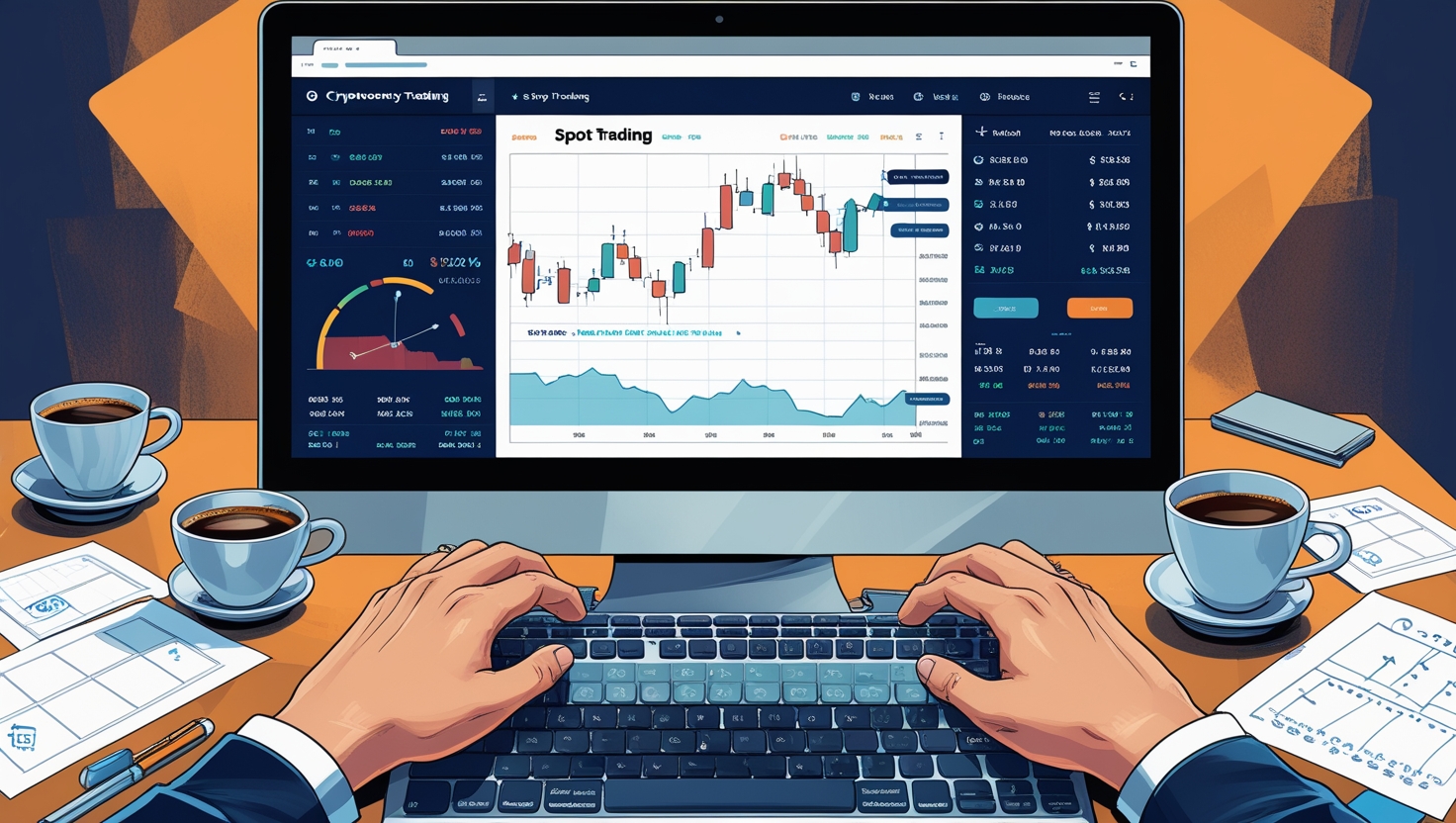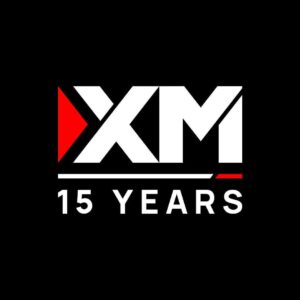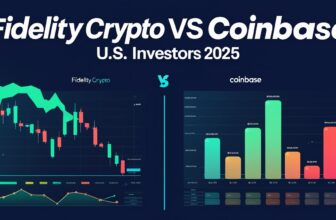
Spot trading in crypto refers to buying and selling digital currencies at the current market price, with transactions settling immediately. In a spot trade, ownership of the cryptocurrency transfers instantly upon execution – much like paying cash for an item in a store. For example, Coinbase defines spot trading as a “straightforward method that allows traders to own the digital assets they acquire”. As Gemini explains, spot trades happen “on the spot,” and once the trade is complete, the asset immediately becomes the buyer’s property. This simplicity and immediacy make spot trading popular among beginners and longer-term investors. By contrast, derivatives like futures or margin contracts involve speculating on future prices without actually taking delivery of the asset. In other words, spot trading gives you direct ownership of crypto at the time of purchase.
Cryptocurrency markets operate 24/7, so spot trading is always possible (no closing bell). As Gemini notes, crypto spot markets are decentralized and run nonstop, unlike centralized forex exchanges which have fixed hours. This means traders worldwide can buy or sell crypto anytime. In practice, engaging in spot trading typically involves the following steps: choosing an exchange or trading platform, depositing funds (fiat or crypto), selecting a crypto pair (e.g. BTC/USD), and placing an order. Coinbase outlines this process: “A trader needs to choose a platform, set up an account, transfer fiat currency or crypto… then select the cryptocurrency pair they want to trade. The trader enters the amount and places an order. This order is executed as soon as it matches with a corresponding order in the order book”. In other words, the exchange’s order book matches your buy order with a seller at the current spot price, and the crypto you buy is credited to your account immediately.
Overview Table: What Is Spot Trading in Crypto
| Aspect | Key Details | Benefits/Drawbacks |
|---|---|---|
| What Is Spot Trading? | ||
| Definition | Buying and selling crypto at current market price with immediate settlement and ownership transfer | ✓ Simple and straightforward ✓ Instant ownership |
| Market Hours | 24/7 trading – no closing bell unlike traditional markets | ✓ Global accessibility anytime |
| How It Works | ||
| Order Types | Market Orders: Instant execution at best price Limit Orders: Execute only at specified price |
✓ Control over execution ✗ No guarantee with limits |
| Process | Choose platform → Deposit funds → Select crypto pair → Place order → Instant settlement | ✓ Transparent process |
| Spot Wallet | On-exchange account storing funds for immediate trading – separate from margin/futures wallets | ✓ Secure storage ✓ Ready for instant trades |
| Spot vs Futures Comparison | ||
| Execution | Spot: Immediate settlement Futures: Contract for future date |
Spot: Instant ownership Futures: Contract only |
| Leverage | Spot: Usually no leverage Futures: High leverage available |
Spot: Lower risk Futures: Liquidation risk |
| Complexity | Spot: Straightforward buy/sell Futures: Complex contracts, margins, expiries |
Spot: Beginner-friendly Futures: Advanced traders only |
| Key Advantages | ||
| Risk Management | No liquidation risk – losses limited to invested amount | ✓ Cannot lose more than investment |
| Asset Control | Real ownership allows participation in DeFi, staking, NFTs, and network ecosystems | ✓ Full utility access ✓ Can move off-exchange |
| Transparency | No complex terms, hidden fees, or contract obligations | ✓ Easy to understand |
| Key Disadvantages | ||
| Market Exposure | Full exposure to crypto volatility with no hedging tools | ✗ Bears full market risk |
| Direction Bias | Bullish bias only – profits require price increases | ✗ No shorting capability |
| Capital Requirements | Must pay full amount upfront – no borrowing available | ✗ Limited by available capital |
| Security Responsibility | User responsible for protecting private keys and wallet security | ✗ Self-custody risks |
How Spot Trading Works
Spot trading uses simple order types. The most common are market orders and limit orders. A market order buys or sells immediately at the best available price. It ensures quick execution, though the exact price may slip slightly due to market volatility. A limit order lets you specify the price at which you want to buy or sell; the trade only happens if the market reaches that price, giving you control but no execution guarantee. For example, if BTC is trading at $40,000 and you place a limit buy at $39,500, your order will only fill when sellers are willing to sell at that price.
Under the hood, spot exchanges maintain an electronic order book of open bids (buy orders) and asks (sell orders). When a buy order matches a sell order at the same price, the trade clears instantly and ownership transfers. From the user perspective, the process looks like placing an order via an exchange’s interface. Coinbase explains: “To engage in spot trading, a trader needs to … select the cryptocurrency pair… enter the amount… and place an order. This order is executed as soon as it matches with a corresponding order in the order book, and the trader receives their acquired crypto in their account”. Once executed, the crypto lands in your spot account/wallet on the exchange.
A helpful analogy: spot trading is like shopping at a market with cash. You pick an item (crypto), pay the exact price, and take it home immediately. There are no delays, contracts, or future arrangements – just a direct exchange of assets for payment. This immediacy and transparency distinguish spot trading from futures or other derivatives, where you might only agree now to buy or sell later.
Spot Wallet: Storing Crypto for Spot Trades
On a crypto exchange, a spot wallet is simply the account or wallet where your funds reside for immediate trading. Bitget defines a spot wallet as “used for storing assets that are available for immediate trading on a ‘spot’ basis”. In practical terms, when you deposit fiat or crypto to an exchange and leave it in your spot wallet, those funds are ready to execute spot trades. Spot wallets are separate from margin or futures wallets (which hold collateral for leveraged or derivative trades). For example, if you deposit $1,000 USD on an exchange and move $500 to your spot wallet, you can immediately use that $500 to buy cryptocurrencies like Bitcoin or Ethereum on the spot market.
Once a spot trade executes, the purchased crypto also goes to your spot wallet. You can then hold it there, use it for further trades, send it to an external personal wallet, or use it as collateral in other crypto services. In short, the spot wallet is your gateway to instant trading. It provides a secure, on-platform address for your spot holdings. As Bitget notes, spot wallets play a “crucial role… by providing traders with a secure and convenient way to store and trade assets on a spot basis”. Unlike futures contracts, spot trading through your spot wallet involves no leverage or loan—making it straightforward and lower-risk for many traders.
Spot vs. Futures Trading
Spot and futures trading differ fundamentally. The following table summarizes the key contrasts:
| Feature | Spot Trading | Futures Trading |
| Execution time | Immediate (trade settles at once) | At a future date (predetermined contract terms) |
| Ownership | You immediately own the crypto in your wallet | You hold a contract, not the actual coin |
| Leverage | Usually none (no borrowing) | Often uses leverage (borrowing), magnifying gains and losses |
| Risk Profile | Losses limited to amount invested (no margin call) | Higher risk of liquidation if price moves against you |
| Suitable for | Beginners, long-term buy/hold strategies | Experienced traders, hedging or speculative strategies |
| Complexity | Straightforward – buy/sell at market price | Complex – requires understanding of margin, funding rates, expiries |
In plain terms: spot trading means buying or selling crypto right now and actually receiving the coins. Futures trading means agreeing to buy or sell crypto at a set price on a later date via a contract. ZebPay explains spot trading as “the most straightforward method where two parties agree to buy and sell crypto immediately at the current market price”. In contrast, it describes futures as “an agreement between two parties to buy or sell a crypto contract at a specified price in the future”.
Because of these differences, spot trading is generally simpler and less risky. As Coinbase notes, “in margin or futures trading, traders bet on price movements without actually owning the cryptocurrencies. In contrast, spot trading allows traders to buy and sell the actual cryptocurrencies, providing ownership to buyers”. Spot traders cannot lose more money than they invest (no forced liquidations due to leverage). However, this also means spot traders miss out on certain tools: you can only profit if prices rise, whereas derivatives let you also bet on declines or hedge risk.
“Nine years ago, we only had spot trading. Now, there are puts and calls… The futures market is very active,” notes Michael Moro, CEO of Genesis Trading. In other words, the crypto market has matured beyond its spot-only origins, adding derivatives, options, and sophisticated trading tools.
Advantages and Disadvantages of Spot Trading
Advantages:
- Simplicity & Transparency: Spot trading is easy to understand and execute. Traders simply buy and hold real crypto. As ZebPay points out, spot trading is intuitive and ideal for beginners. There are no complex contract terms or expiry dates to worry about.
- Immediate Ownership: You receive the actual cryptocurrency instantly. This allows you to hold it long-term, move it off-exchange, or use it in DeFi protocols. For example, Coinbase highlights that spot trading lets you own your coins, which you could later use as collateral or to earn yield in lending pools.
- Lower Risk of Liquidation: Without borrowed funds, spot trades cannot be liquidated by the exchange. Your worst-case loss is the amount you paid. Gemini notes that spot trading “avoids the risks associated with leverage,” which means you cannot lose more than your initial investment.
- 24/7 Market Access: Crypto spot markets run nonstop. Traders can react instantly to news at any time of day, unlike markets with fixed trading hours.
- Real Asset Ownership: By owning the crypto, you benefit if it appreciates (e.g. hodling BTC through a bull run) and can participate in network ecosystems (staking, NFTs, etc.).
Disadvantages:
- Market Volatility: Cryptocurrency prices can swing wildly. While this volatility creates profit opportunities, it also means prices can drop quickly. Spot traders bear the full brunt of market downturns. Coinbase cautions that spot traders must “be vigilant and stay updated” due to crypto’s unpredictability.
- Bullish Bias: Spot trading requires the asset’s price to go up to make a profit. There are no easy ways to profit if prices fall (unlike futures/shorting). CoinTracker explains that spot trading has an inherent “bullish bias” because traders are “limited to holding assets, often waiting for an uptrend”.
- Capital Requirement: You must have the full cost of the crypto up front. There’s no borrowing, so gains are capped by how much you buy. CoinTracker notes the “full capital requirement” as a downside – you need to fund the trade entirely with your own money, limiting potential returns.
- Security Responsibility: Owning crypto means you must keep it safe. If your exchange account is hacked or your private keys lost, the assets are at risk. This contrasts with some derivative products where the exchange holds all collateral.
In summary, spot trading is the foundation of crypto investing: you directly own what you buy, with no leverage risk. As Deribit’s CCO Luuk Strijers puts it, spot trading can even be offered with perks: “Our spot trading feature serves as an exceptional tool for exchanging collateral like BTC and ETH, with the added benefit of zero costs” – highlighting how exchanges are enhancing this basic service. The trade-off is that spot trading is inherently simpler and safer, but typically yields steadier (though potentially smaller) returns than leveraged strategies. New crypto users often start with spot trading before venturing into futures or margin products.
Frequently Asked Questions (FAQ)
What is spot trading in crypto?
Spot trading in crypto means buying and selling cryptocurrencies at the current market price for immediate settlement. In a spot transaction, the traded crypto is delivered right away to the buyer’s wallet, giving them direct ownership of the asset. It is the simplest form of crypto trading, as opposed to futures or options where delivery happens at a later date.
How does spot trading differ from futures trading?
The key difference is timing and ownership. Spot trading involves exchanging crypto instantly at today’s price, so you own the coins outright. Futures trading involves a contract to buy or sell crypto at a fixed price on a future date. With futures, you do not receive the actual asset now. Futures also often use leverage (borrowed funds), increasing risk. In spot trading, no leverage is used, so your losses cannot exceed your initial investment.
What is a spot wallet and how is it used?
A spot wallet is simply the part of your exchange account where funds are stored for spot trading. When you deposit fiat or crypto into an exchange and keep it in your spot wallet, those funds are ready for immediate buy/sell orders. Exchanges treat spot wallets as separate from margin or futures wallets (which hold collateral for leveraged trades). Any crypto you purchase via spot trading ends up in your spot wallet, where you can hold it, withdraw it to a personal wallet, or use it for further trades.
Is spot trading safe for beginners?
Spot trading is generally safer than trading futures or using leverage, because you can only lose what you invest (no margin calls). It is often recommended for beginners to get comfortable with crypto markets. However, beginners must still manage risks: crypto volatility can be high, and they must safeguard their account security. Using reputable exchanges, enabling two-factor authentication, and investing only what one can afford to lose are good practices. Spot trading’s simplicity (buy low, sell high) makes it an accessible learning ground.

















